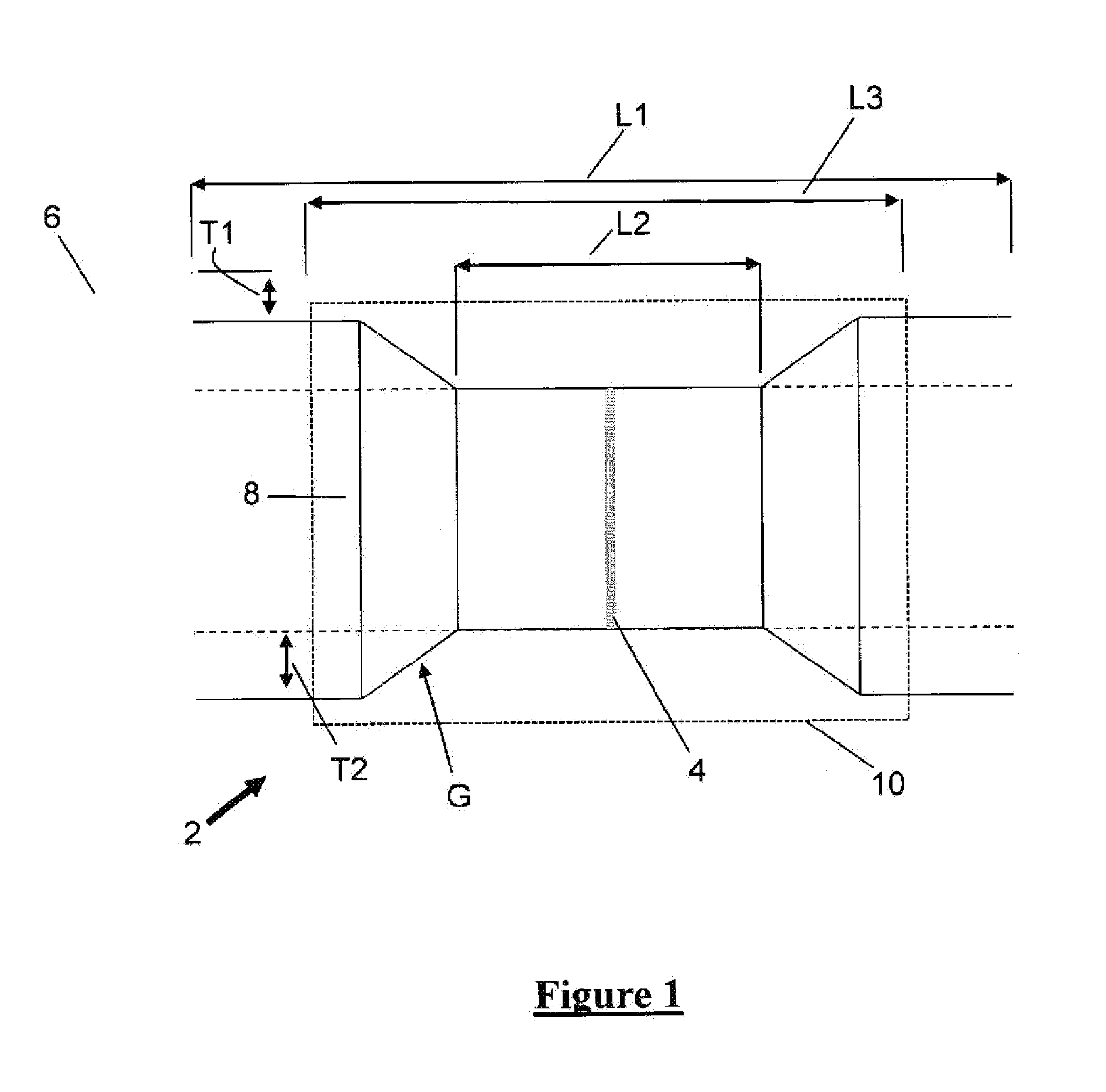Apparatus and method for heating heat-shrinkable pipe sleeves
a technology of applicator and heat shrinking sleeve, which is applied in the direction of lighting and heating apparatus, mechanical apparatus, furniture, etc., can solve the problems of unnecessary heating devices spanning a long distance over the length of the applicator, and possibly waste of space and energy, and achieve the effect of quick and easy replacemen
- Summary
- Abstract
- Description
- Claims
- Application Information
AI Technical Summary
Benefits of technology
Problems solved by technology
Method used
Image
Examples
Embodiment Construction
[0050]FIG. 1 shows in cross-section a schematic view of a coated pipeline 2 in the region of a welded joint 4. The pipeline is coated with concrete 6 along its length, but in the region of the joint 4 there is a cut-away portion of a length L1 of about 750 mm where the concrete is absent. The concrete coating 6 has a thickness T1 of about 40 mm. The pipe, being of steel, has a corrosion resistant plastic coating 8 having a thickness T2 of about 2.5 mm. This coating 8 is also cut away to reveal a bare field joint having a length L2 of about 350 mm, in which the uncoated steel pipe is exposed. The external diameter of the uncoated (bare) pipe is about 450 mm. The length of the pipe section being added to the pipeline is about 12 m (40 feet). The plastic pipe coating 8 gradually reduces in thickness from 2.5 mm to 0 mm by means of a gradient G of about 15 to 20 degrees (the scale in FIG. 1 is exaggerated for the sake of illustrating the geometry of the component parts of the pipe in th...
PUM
| Property | Measurement | Unit |
|---|---|---|
| Temperature | aaaaa | aaaaa |
| Length | aaaaa | aaaaa |
| Time | aaaaa | aaaaa |
Abstract
Description
Claims
Application Information
 Login to View More
Login to View More - R&D
- Intellectual Property
- Life Sciences
- Materials
- Tech Scout
- Unparalleled Data Quality
- Higher Quality Content
- 60% Fewer Hallucinations
Browse by: Latest US Patents, China's latest patents, Technical Efficacy Thesaurus, Application Domain, Technology Topic, Popular Technical Reports.
© 2025 PatSnap. All rights reserved.Legal|Privacy policy|Modern Slavery Act Transparency Statement|Sitemap|About US| Contact US: help@patsnap.com



